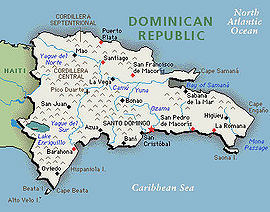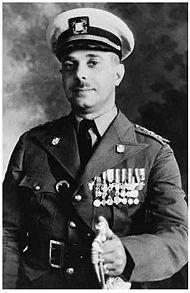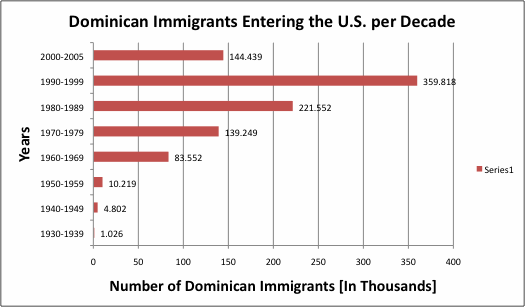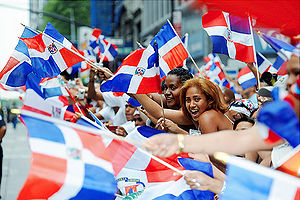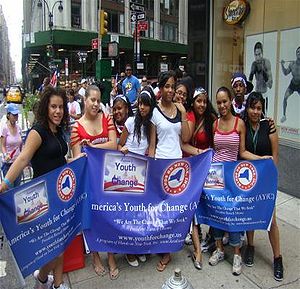At A GlanceFrom From the Island to the City: Dominican Communities in New York City
Pre 1960sAt the turn of the twentieth century, the Dominican Republic faced great debt as a result of internal issues such as the revolution that broke out in 1902. United States sent marines in to help the DominicanRepublic and the two countries signed a 50-year treaty according to which the US took over the republic's customs department in return for buying its debts. U.S. as a result occupied D.R. until 1924 when the constitutional government assumed control. From 1930 until 1961 the Dominican Republic was run by the military dictator Rafael Trujillo [shown on the picture in the right]. Although infrastructure was improved under his leadership, the Dominican economy remained closed to free trade policies and Dominican emigration was severely limited [1]. After Trujillo’s assassination in 1961 and democratic elections in 1962, Juan Bosch of the leftist Dominican Revolutionary Party assumed presidency and returned the country to democracy. However, he was removed through a miltary coup, which led to the United States invasion of the Dominican Republic.
This intervention led to an outflow of Bosch supporters and political activists that headed mostly to the United States. These emigrants are considered to be the earliest Dominicans to arrive in the US. This first wave of immigration remained small and politically motivated. According to the 1980 census, only 6.1% of the Dominican-born population arrived before 1960. [2] The common reason for immigration in this period was fear of the political and social instability the island was undergoing.
1965 Immigration LawDominican immgration to the United States escalated greatly during and after the 1960s. This was a result of the passage of the Immigration Law of 1965 that allowed for large numbers of immigrants to come and live in the U.S. This helped countless families reunite and also allowed families to bring over any number of members to this nation. Dominicans, like many other immigrants, benefited from this law. The new immigration law was a relief for most Dominicans because they were facing "the political and economic problems that plagued the Dominican Republic...starting with a U.S. sponsored coup in 1963 and eventual U.S. occupation in 1965."[3][4] 1970s to Late 1980s ("Crack Epidemic")Washington Heights was among the first neighborhoods hit hard by the spread of crack-cocaine. In the early 1980s, the majority of cocaine coming to the U.S. was from the Dominican Republic. It was cheap, simple to produce, ready to use, and highly profitable for drug dealers to develop. As early as 1980, reports of crack were appearing in Los Angeles, San Diego, Miami, Houston, and in the Caribbean. In the 1980's, areas of heavy Dominican immigration like Washington Heights became the hub of the New York City crack epidemic. From the Heights flowed thousands of dollars in cash to families back home, offering some old-country neighborhoods opportunities for improvement and reconstruction. However, Dominican immigrants in the United States faced immense social stigmas from the American community. Security escalated around the neighborhoods and the immigrants were often preyed on by police officers. While those days have since subsided, for many poor Dominican families, sending at least one family member to the United States is still viewed as a way to improve life. For many of those who have emigrated, a return visit home offers a chance to boast of their new-found success — real or not. A Dominican immigrant who is now a teacher in the Bronx High School of Science said, "When you go home, everyone sees you as an American, while in New York, you are a Dominican."[5] 1990s to PresentDominican Americans have been living in the United States for several decades now. They have created a place for themselves in New York City and the United States. Dominican businesses such as restaurants, salons, and supermarkets are widespread and play a large role in solidifying Dominican identity in New York City.References
|

